For the past two years, I have been reading Australian books and reviewing them on Little Swag of Books, in an attempt to increase my own reading of Australian books and to explore exactly what makes a book Australian. Initially, I intended to blog for a year, but I was enjoying it so much, I continued.
For now, I have decided to stop blogging on Little Swag of Books. It is time for me to move on to other projects, and I am not able to dedicate as much time to this blog as I would like. I’ve thoroughly enjoyed reading Australian books, confirming my beliefs of the wide range of writing found within Australian literature, and I cannot thank all of you enough for following me, reading my posts and engaging with my exploration of Australian writing. I may revive this blog at some point in the future, but for now, if you wish to continue following my blogging I will blog more general posts as not only a reader but as a writer too (I will still post the occasional book review) on my Tumblr website, www.raelkegrimer.com.
Thanks again for all your support, and, as always, happy reading!
October has been a busy, busy month. I returned from my trip overseas at the end of September, and immediately started packing to move out. I finally moved out, but my partner and I decided to paint the two bedrooms in the place we’ve moved into, so I’ve spent many October days inside, applying coat after coat of paint. When I wasn’t painting, I’ve been writing job application after job application, trying to find myself a job. And after three months of not being able to write a word, I finally sat down at my laptop and started writing again, and I have some exciting projects coming up over the next few weeks and months which I’ve been working on, one of which is getting my blog back on track. So finally I’m feeling ready to get back into reading and blogging regularly.
I’ve decided to start this new post on the first Monday of every month, because I don’t exclusively read Australian books. I choose to blog about Australian books because I’m exploring what makes a book Australian, but to read exclusively Australian books would be to shut out a large majority of wonderful reads! So here’s a look at the other books and magazines I read this month (3 of which, were, admittedly, Australian).
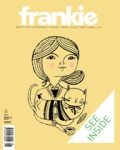 The new edition of Frankie magazine, a bimonthly Australian publication with a strong focus on anything vintage and creative types. I find some editions more inspiring and more to my interest than others, and this month’s wasn’t an edition I read and thought WOW, but they did have a wonderful feature on some zine creators, who publish zines on everything from dogs to coffee.
The new edition of Frankie magazine, a bimonthly Australian publication with a strong focus on anything vintage and creative types. I find some editions more inspiring and more to my interest than others, and this month’s wasn’t an edition I read and thought WOW, but they did have a wonderful feature on some zine creators, who publish zines on everything from dogs to coffee.
My new discovery this month was SLOW Magazine, a quarterly Australian publication about the slow living movement. It is a wonderful publication. This month had an in-depth feature on the philosophy of the Steiner school system, a handwritten extract by Tim Winton from his new novel Eyrie (which I’ve been promised as a 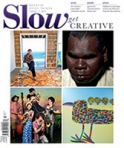 Christmas present, so I still have two months to wait before I get to read it!) and the experiences of different families as they swapped their fast-paced city lives for country living. It will definitely become one of my few regular magazine buys.
Christmas present, so I still have two months to wait before I get to read it!) and the experiences of different families as they swapped their fast-paced city lives for country living. It will definitely become one of my few regular magazine buys.
The Lifted Brow Melbourne Writers Festival Edition. I’ve reviewed The Lifted Brow on my blog before, but this edition was really something- the team wrote, edited, designed and printed the magazine all during the week of the Melbourne Writers Festival. And I must say, it’s a wonderful issue, all the more so because it was put together in a week. One week. I won’t say any more. If you want to know what’s inside, you’ll just have to get yourself a copy.
 Lean In, by Sheryl Sandberg, COO of Facebook. I actually won this book back in April, without really knowing what the book was, but from the first page, I was hooked. Sandberg writes about women and careers. She acknowledges that it is, of course, a woman’s choice to decide if she wishes to work in or outside the home, but that for those who choose to work outside the home, there are still major obstacles which prevent women from getting to the top of her profession (if that’s what she chooses to do). I’ve never read anything like this book. Sheryl makes some excellent points, others I don’t agree with, and still more which I’d never really considered, but can already see in my own approach to my work and career. A fascinating book!
Lean In, by Sheryl Sandberg, COO of Facebook. I actually won this book back in April, without really knowing what the book was, but from the first page, I was hooked. Sandberg writes about women and careers. She acknowledges that it is, of course, a woman’s choice to decide if she wishes to work in or outside the home, but that for those who choose to work outside the home, there are still major obstacles which prevent women from getting to the top of her profession (if that’s what she chooses to do). I’ve never read anything like this book. Sheryl makes some excellent points, others I don’t agree with, and still more which I’d never really considered, but can already see in my own approach to my work and career. A fascinating book!
Happy reading!
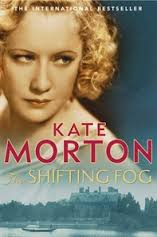 I discovered Kate Morton a little over a year ago, when I read and reviewed her new book The Secret Keeper for Lip Magazine. I instantly fell in love with the author, and was determined to read her back list. For Christmas last year, I got given The Shifting Fog, and have been yet to read it. So it seems only fitting that I begin my 100 Homegrown Reads Challenge with the book.
I discovered Kate Morton a little over a year ago, when I read and reviewed her new book The Secret Keeper for Lip Magazine. I instantly fell in love with the author, and was determined to read her back list. For Christmas last year, I got given The Shifting Fog, and have been yet to read it. So it seems only fitting that I begin my 100 Homegrown Reads Challenge with the book.
I haven’t read much of the book yet, but already I’m captivated. A film maker is making a film about a mysterious suicide which occurred in an old English mansion in 1924. In 1999, 98 year-old Grace Bradley is the only person still living who can shed any light on what occurred that night at Riverton Manor. The film maker contacts Grace to ask if she would review the sets to make sure the details are correct, and Grace’s memory sends her back to 1924.
Morton begins the novel with a scene written as though it is part of the film maker’s movie script, and I must admit, it is quite off-putting to open the first page and be confronted by a movie script. I wanted to be immediately drawn into the story, and Morton’s beautiful prose, and starting with the script removed my interest immediately. But once I found the courage to actually start the novel, I didn’t want to put it down. I am especially eager to find out how the mystery of the suicide is resolved, given the brilliant twist Morton injected into the end of The Secret Keeper.
Morton is another Australian writer who chooses to write stories set in other countries, but her inclusion on the list of favourite home grown reads shows that it is not the locality of a novel which necessarily makes a novel Australian, but the nationality of the author who writes the story. And when the writer is as good as Kate Morton is, why would we claim her books are anything but Australian? Looking forward to all the twists and turns I’ll undoubtedly discover in The Shifting Fog!
 Deborah O’Brien’s The Jade Widow caught my attention for two reasons: one, it is set in Australian society in the 1880s, and two, O’Brien’s two protagonists are women. I have read very little, fiction or otherwise, set in Australia in that time period, particularly with a narrative revolving around the role of women at the time.
Deborah O’Brien’s The Jade Widow caught my attention for two reasons: one, it is set in Australian society in the 1880s, and two, O’Brien’s two protagonists are women. I have read very little, fiction or otherwise, set in Australia in that time period, particularly with a narrative revolving around the role of women at the time.
The Jade Widow is the sequel to Mr Chen’s Emporium, and continues the story of Eliza Miller, who is attempting to forge a career as one of Australia’s first female doctors, and Amy Chen, who is still mourning the death of her husband twelve years after the event, and has big plans for establishing a grand hotel in Millbrooke in country New South Wales.
Although I hadn’t read the prequel, I found it easy to slip into the world of The Jade Widow. O’Brien’s characters are full of life, and her writing sucks the reader into the time period and holds them there as her two strong female protagonists each try to carve a place for themselves in a man’s world. Several prominent figures from Australia’s history make appearances in the book, and O’Brien’s writing wonderfully captures what life was like in ‘the colony’ before federation.
Even so, at times the dialogue in the book feels clumsy, as though O’Brien is trying to offload as much information about the era as possible through her characters’ interactions, and that pulled me out of the story and made me feel like I was reading a history textbook. Despite this, the overall charm of the book is enough to overcome these moments.
The biggest disappointment for me with this book was the ending. It felt very abrupt, and many of the issues discussed in the novel, such as whether a woman can have a career and a family, were left unfinished and undealt with. I can accept that these issues were very new ideas for the era, and that even now women do not have all the answers and are still trying to balance family and career, yet I wished for there to be more resolution in both Eliza and Amy’s narratives, offering more closure to this particular chapter of their lives.
Still, it was refreshing to read a novel about Australian women and their place in Australian society in the 1880s, and O’Brien does a wonderful job of portraying the expectations of women and the obstacles they faced at the time. This novel made me thankful for those women who lived in the years before me, who pioneered the women’s movement and feminism, and made it ordinary, not extraordinary, for women to have careers in whichever field they choose.
Published by Random House, 2013
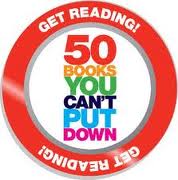 It’s that time of year again: Get Reading! Australia have released their list of Top 50 Books You Can’t Put Down. Of those on the list this year, I have read only one so far (Burial Rites, Hannah Kent) and two others are loaded onto my e-reader, awaiting their turn to be read (Mateship with Birds, Carrie Tiffany and Questions of Travel, Michelle de Krester). A few other titles are already on my mental hit list. I love this initiative of encouraging people to read, and I especially love that the list includes books from all genres, including picture books.
It’s that time of year again: Get Reading! Australia have released their list of Top 50 Books You Can’t Put Down. Of those on the list this year, I have read only one so far (Burial Rites, Hannah Kent) and two others are loaded onto my e-reader, awaiting their turn to be read (Mateship with Birds, Carrie Tiffany and Questions of Travel, Michelle de Krester). A few other titles are already on my mental hit list. I love this initiative of encouraging people to read, and I especially love that the list includes books from all genres, including picture books.
This year, Get Reading! have taken things further, announcing Australia’s Top 100 Favourite Homegrown Reads, as voted by Australians. Again, this list includes books from all genres, and I was pleased to see that many of my favourites made  the cut. There are so many wonderful titles on the list, and of the 100 books, I’ve read 26 of them. Not terrible, but there are definitely some fantastic titles on the list which I’ve overlooked. Some I even have sitting on my bookshelf, yet they keep getting pushed to the back of the queue and somewhere along the line forgotten.
the cut. There are so many wonderful titles on the list, and of the 100 books, I’ve read 26 of them. Not terrible, but there are definitely some fantastic titles on the list which I’ve overlooked. Some I even have sitting on my bookshelf, yet they keep getting pushed to the back of the queue and somewhere along the line forgotten.
In the spirit of the Get Reading! initiative and in order to acquaint myself with some more Aussie classics, I’m going to start my own Get Reading! challenge and read my way through the 76 books I haven’t yet read. This will include committing to giving Tim Winton’s Cloudstreet a third attempt, despite my resolution to get on with reading books I enjoy. Instead of writing straight reviews of these titles, I will blog about my experience of reading these books as I go. My goal will be to finish reading all 76 books by September next year, when the 2014 Get Reading! initiative is launched.
Join me in the challenge! I would love to hear other readers’ thoughts about the books on the list, and their experiences of reading them.
So what are we waiting for? Shut your laptop screen, disable your WiFi and dive into that book you’ve been meaning to read for ages. My only dilemma is which of the 76 books to read first…
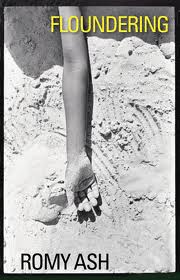 After all the attention Romy Ash’s debut Floundering has received this year, and all the praise I’d heard about the novel, it sounded like a book I would enjoy, and one which I had to read. Somehow, despite everything I’d read and heard about the novel before I started reading it, when I delved into the pages I found myself lost in something completely different to what I had expected, and I wonder if this surprise was part of the reason I loved this novel so much.
After all the attention Romy Ash’s debut Floundering has received this year, and all the praise I’d heard about the novel, it sounded like a book I would enjoy, and one which I had to read. Somehow, despite everything I’d read and heard about the novel before I started reading it, when I delved into the pages I found myself lost in something completely different to what I had expected, and I wonder if this surprise was part of the reason I loved this novel so much.
Brothers Tom and Jordy get left on their grandparents’ doorstep by their mother, Loretta. Then out of the blue, she returns, and takes the boys back. Told through the eyes of nine-year old Tom, I found this novel heart-breaking. Ash’s prose is both stark and mellow, as she pulls the reader into Tom’s world, where even the most unusual situations don’t seem out of the ordinary to the young boy. I fought back tears for much of the novel, and alternated between anger and sadness for Loretta, who clearly tries her best but doesn’t have much idea. I admired the boys and their resilience, as the book serves as a reminder that while kids are resilient people, who knows what long-lasting effects certain events may have on the rest of their lives?
Books I love I can usually read again and again, but I don’t know if I’ll ever be able to read Floundering again. The writing is raw, the emotion real and I convinced myself that what I was reading was real. Ash brought the vast Australian landscape to life, where it’s not difficult to feel like you’re the last person on earth, together with characters who could be those people who live just down the road, or those kids you knew from school. Floundering is a novel which isn’t easy to forget, and, despite evoking so much emotion, is very enjoyable to read. But maybe only once.
Floundering, Romy Ash. Text Publishing, 2012
 Hannah Kent was a legacy at our university. She took the same creative writing degree as I undertook a few years after her, and our lecturers were always talking about her, and how she moved to Melbourne and started her very own lit journal, Kill Your Darlings. Now, the uni has even more reason to be proud of their PhD candidate, as Kent’s debut novel Burial Rites won the Australian Unpublished Manuscript Award in 2011 and subsequently a bidding war began over the publication rights to her manuscript. The hype leading up to the release of the book, particularly in South Australia, was enormous. And it hardly seems fair that a debut should have such high expectations before the public has even read a page.
Hannah Kent was a legacy at our university. She took the same creative writing degree as I undertook a few years after her, and our lecturers were always talking about her, and how she moved to Melbourne and started her very own lit journal, Kill Your Darlings. Now, the uni has even more reason to be proud of their PhD candidate, as Kent’s debut novel Burial Rites won the Australian Unpublished Manuscript Award in 2011 and subsequently a bidding war began over the publication rights to her manuscript. The hype leading up to the release of the book, particularly in South Australia, was enormous. And it hardly seems fair that a debut should have such high expectations before the public has even read a page.
I couldn’t wait to read this story about the last woman, Agnus Magnusdottoir, to be executed in Iceland. Burial Rites is Kent’s fictional account of the circumstances surrounding her protagonist’s execution, and the last months of the woman’s life before the execution. I enjoyed reading the book, but for me it wasn’t more than simply interesting. That is not to criticise the writing itself; which is sharp, considered and paints a beautiful picture of the Icelandic countryside. But for me, knowing from the outset the fate of Agnus Magnusdottoir robbed the novel of the intrigue and suspense which otherwise would have made the book one which I couldn’t put down.
Before I read the book, I read an article Kent wrote for Kill Your Darlings, about the process of researching, writing and getting Burial Rites published. It is one of the most honest, passionate and frank articles I have ever read about writing and getting published, and captures the stress, self-doubt and persistence which is required to not only actually complete a novel, but to find a publisher and re-edit a manuscript for publication.
While Burial Rites is not one of my favourite books, it is a book which definitely deserves the hype surrounding it, and is well worth reading. After all, to not know that Agnus Magnusdottoir was a real person or her fate before reading is an injustice to her legacy. Kent skilfully explores another side of the story, suggesting that nothing is ever as black and white as it seems.
Published Picador, 2013
Due to my travels until the end of September, the next book club book won’t be posted until October, and my posts will be more infrequent than usual while I’m away. I am, however, reading, and will have lots to post about when I return if I don’t manage in the meantime!
Happy reading!
